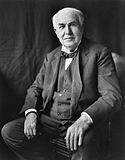MRISAR hand crafted three finger robotic arm-2
Autor/Urheber:
Attribution:
Das Bild ist mit 'Attribution Required' markiert, aber es wurden keine Informationen über die Attribution bereitgestellt. Vermutlich wurde bei Verwendung des MediaWiki-Templates für die CC-BY Lizenzen der Parameter für die Attribution weggelassen. Autoren und Urheber finden für die korrekte Verwendung der Templates hier ein Beispiel.
Shortlink:
Quelle:
Größe:
2814 x 1980 Pixel (3038957 Bytes)
Beschreibung:
Sisters Aurora and Autumn Siegel, the youngest members of the MRISAR R&D team, began their apprenticeship in Robotics as preschoolers. They are seen here completing a hand crafted three finger robotic arm for public use in museum environments which help educate millions of people worldwide. The open design of this device relates to STEM and STEAM. Many of the robotics technologies that the team invents are used in both their museum exhibits and their humanitarian prototypes (like Rehabilitation Robotics for victims of paralysis) that have been presented before and/or published by leading organizations.
This device was designed by MRISAR’s R&D team and fabricated at MRISAR, a family owned business in North Dakota. Everything from MRISAR is designed and prototyped by two generations of 4 family members, the youngest two Autumn and Aurora Siegel, along with their parents John Adrian Siegel and Victoria Lee Croasdell-Siegel. The team goals are humanitarian and educational uses for science, art and technology. The devices created by them are unique in the fact that they are handcrafted, not mass produced. This allows the team to create across a wide range of technologies, applications and elements of science and art. The public use robotic exhibits they create for museums and science centers around the world relate to STEM and STEAM. This two generation team has even invented robotic systems for NASA. Science in combination with art relate to a better understanding of engineering and technology. Through creating handcrafted elements of engineering based on bio-inspired elements and abstract reasoning such devices explore how nature develops engineered creative aspects that humanity can use for real world applications in science and industry. Such devices also serve as valuable elements of education. From a technical vantage this specific device combines electromechanical and mechanical engineered elements with travel limits and Boolean logic to achieve a goal of creating systems that can instantly adapt to their surroundings and also compensate for human user errors. Other key elements are observations of design standards such are compensation for mechanical shock load, derating electrical, derating mechanical, derating electronic and mechanical elements, analysis of materials, weight distribution and comparisons to human arm operating degrees of freedom. More images of the creation of this and other MRISAR robotic devices can be seen at mrisar.org.The work of MRISAR’s R&D team has drawn world interest for the public-use educational robotic exhibit prototypes that they create and also for their humanitarian R&D that aims to improve the quality of life. Their work has been presented before and/or published and awarded by: the United Nations, NASA-Emhart, Stanford, Cambridge, ICORR Robotics conferences, ROMAN Robotics conferences, IEEE, Discover Awards, International Federation of Robotics, etc. The “International Federation of Robotics” annual publication on Service Robotics regularly lists MRISAR Institute of Science, Art & Robotics in at least ten categories of robotics. The publication covers major contributors in the field of robotics and within that coverage focuses on the diversity of robotics, worldwide uses for robotics, economic factors and projections. Most are industrial providers, but the publication also includes NASA and other renowned research elements that reach well beyond industrial applications. In the 2011 publication MRISAR was featured in an entire chapter. The publication picks one per year for special focus in a chapter and covers a multitude of ventures in the rest of the document.
Lizenz:
Relevante Bilder
Relevante Artikel
ErfinderEin Erfinder oder eine Erfinderin ist eine Person, die durch eigene schöpferische Leistung eine zuvor nicht bekannte Lösung oder Anwendung im Bereich der Technik hervorbringt (Erfindung). Die drei konstitutiven Eigenschaften von Erfindern sind:das Erkennen eines Problems oder eines Mangels, neue, kreative Lösungsansätze und mindestens eine eigene Entdeckung. .. weiterlesen






